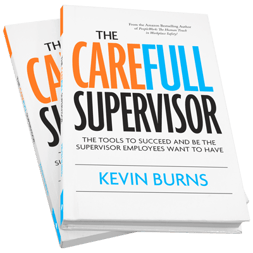To build a successful, strong and supportive safety culture requires a foundation of employee buy-in.
 Safety has, traditionally, set itself up based on the compliance model of checks and balances. It is then presented to employees as paperwork and meetings. Then the focus gets placed on reporting and tracking. It’s difficult to get employees to buy-in to a program of checks, forms and paperwork. Employees can't see what's in it for them. As a result, buy-in to safety is marginal.
Safety has, traditionally, set itself up based on the compliance model of checks and balances. It is then presented to employees as paperwork and meetings. Then the focus gets placed on reporting and tracking. It’s difficult to get employees to buy-in to a program of checks, forms and paperwork. Employees can't see what's in it for them. As a result, buy-in to safety is marginal.
Companies re-brand and re-launch consumer products in an effort to be relevant again. Laundry detergent, new models of car, the latest iPhone. They're "new and improved." These companies give their old products a new spin with new improvements. And they make sales.
To build a successful safety culture requires a foundation of employee buy-in. Without it, you will spend large amounts of money and never achieve great success. But like any consumer product, before it can be bought, there has to be a benefit to the consumer. They have got to see how this product makes their life better. When they find it, that's when they buy-in.
It's time to re-launch your "new and improved" safety program through values-based conversations with employees. Help employees see how safety is exactly what they need to get them from where they are (in the present) to where they want to be (in the future).
Here are three compelling conversations you must have to get buy-in to safety from employees:
1Talk about Desire: the “want” list. This is short-term gratification. If there's something on the Desire list, you're going to need cash to quench the desire. Does the employee want a new car, new house, big-screen TV, man-cave, pro-sports season tickets, etc? Having the cash to pay for their desires immediately is gratifying. The ability to pay for the kids’ university, wedding and maybe their first home requires cash. To take a long vacation or to buy a motor-home takes cash. Impulse buying and emergency spending in the present day takes cash. The ability to pay cash without the burden of going into debt requires continuous cash-flow. Quenching desire requires continuous-cash-flow. Without continuous-cash-flow, life is expensive and options limited. Taking unnecessary risks jeopardizes continuous-cash-flow. Doing risky things off-shift is even more consequential. When you're off-shift, there's no insurance or WCB. When you’re not working, cash-flow stops dead. Choosing safety assures that the cash-flow will continue - and life is good.
2Talk about Security: the long-term investment part of living. This is where employees set a plan to remove worries in the future. This is where they plan for retirement, and set up reserves for the long-term. This is also where they know that they will never burden their spouses and kids. They will never have to struggle to make ends meet. They will never have to downsize or live in fear of facing a financial crisis due to injury. Choosing safety helps employees plan for the future. Safety connects them directly to security. Knowing that an employee is set to weather a major financial storm gives them peace of mind. Think about it, people forced to live with money and health pressures aren’t happy. Choosing safety reduces stress. Safety provides long-term security for families.Having a plan for retirement is one thing. Having a plan to make it to age 65 (or whatever age you want to retire) is another. Safety is the plan you need to make it to retirement.
3Then talk about Legacy: how the employee wants to be remembered. In twenty years, does the employee want to be giving a leadership speech about how safety made them a success? Or do they want to be the person who delivers a “how I lost my limb - don’t do what I did” speech? Safety Leader or accident-survivor? Their legacy is their hands. How life turns out is the result of the choices made each day. A life of being incapacitated is a mental and physical burden to your loved ones. Selfless people don't roll the dice. They make a plan to make a contribution - not to be a burden. Courtesy is the cornerstone of lasting relationships. But courtesy is in short supply when high-stress issues show up in relationships. When you’re not overwhelmed by stress, building a legacy is easy. The longer you are alive and healthy, the greater one's potential legacy gets.
 Safety is what connects your present moment to your long-term goals. The one thing that will connect continuous-cash-flow, long-term investments and legacy, is safety. Without safety, everything is at risk. Without choosing safety, by default, you allow chance to dictate your results.
Safety is what connects your present moment to your long-term goals. The one thing that will connect continuous-cash-flow, long-term investments and legacy, is safety. Without safety, everything is at risk. Without choosing safety, by default, you allow chance to dictate your results.
You increase the odds of having a good life when you choose safety. In every moment of every day, you have a choice to make, a leadership decision: safely or unsafely? Buy-in. There is so little risk and so much reward.
Kevin Burns is a management consultant, safety speaker and author of "The Perfect Safety Meeting" and his newest #1 Amazon Health & Safety Bestseller, "Running With Scissors - 10 Reasons To Invest in Safety In Slow Times." He is an expert in how to get through to people - how to talk with them so they hear and understand. Click below to start a conversationabout how to improve your organizational safety culture and safety leadership.
(c) Can Stock Photo


